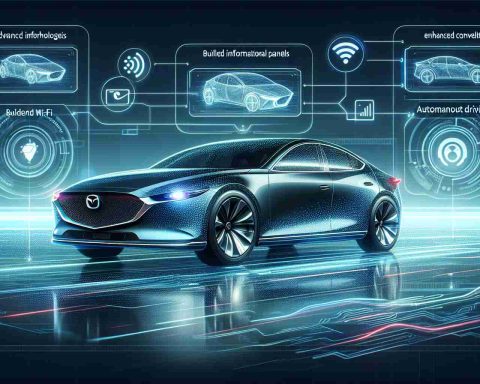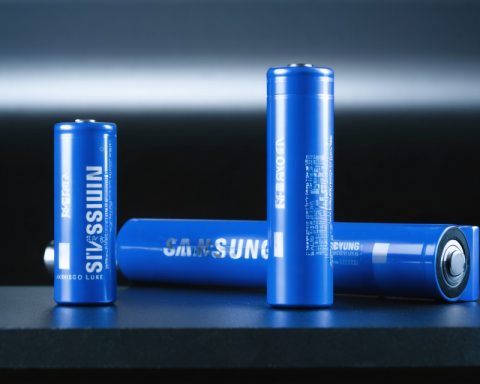- Market Street in San Francisco has transformed from a car-congested area to a vibrant transit corridor, improving transit speed by 14%.
- Despite a severe drop in Muni public transit usage during early 2020, ridership has rebounded to 75% of pre-pandemic levels.
- Waymo’s self-driving cars introduce complexity to the urban landscape, sparking debates about public space use and transit priorities.
- Concerns arise over autonomous vehicles potentially undermining goals for pedestrian-friendly and culture-rich cityscapes.
- The city’s challenge is to balance technological innovation with preserving social spaces that emphasize community and culture.
- Ultimately, the focus remains on ensuring urban innovations benefit all residents while maintaining San Francisco’s historic and cultural ethos.
San Francisco’s Market Street, once a bustling artery choked with automobiles, now stands as a testament to transformative urban policy. Since cars were banned, the city has embraced a vision of an unencumbered thoroughfare where Muni buses and streetcars glide more smoothly than ever, posting a notable increase in speed and efficiency by 14%. Yet the tranquility of transit is now disrupted by an unforeseen contender: Waymo’s self-driving vehicles.
Soon after Muni ridership fell off a cliff in early 2020—plummeting by nearly 90%—the numbers have made a remarkable recovery. With last year’s ridership bouncing back to 75% of pre-pandemic levels, the trend hints at a promising resilience. However, the integration of autonomous Waymo cars into the mix raises questions about the future of public transit and the ethos of urban space allocation in one of the nation’s most progressive cities.
Though Waymo’s autonomous rides have quietly been given the green light under existing San Francisco Municipal Transportation Agency (SFMTA) traffic regulations, the palpable tension between human and robot on one of the city’s most iconic streets cannot be ignored. The self-driving cars, classified as commercial vehicles, skirt the boundaries drawn for traditional ride-sharing operations like Uber and Lyft.
As the debate intensifies, civic voices echo a common sentiment. Champions of sustainable transit and culture-rich streetscapes question the new normal. They worry about conceding swathes of public space to a singular tech initiative, which might overshadow San Francisco’s ambitious goals of creating pedestrian-friendly, vibrant cityscapes. Prioritizing foot traffic, cycling, and mass transit is seen as integral to preserving Market Street as a sanctum for commerce and culture.
In the midst of this digital revolution, a poignant query arises: Can San Francisco balance innovation with its humanistic traditions? Navigating this tension demands a deliberate reflection on what the city stands for—and what it ultimately aspires to become. As the city reimagines its streets, the heart of the matter remains: ensuring that urban innovations benefit all its residents, reaffirming San Francisco’s commitment to community, culture, and the collective human experience.
Could Market Street’s Car Ban Be the Future of Urban Transportation?
Introduction
San Francisco’s decision to ban cars on Market Street marks a significant shift in urban policy, focusing on sustainable transit and enhanced city living. However, as self-driving vehicles like Waymo enter the scene, the city faces new challenges and opportunities. This article delves deeper into the implications and provides insights into urban transportation’s future in San Francisco.
The Wider Impact of Car-Free Market Street
1. Increased Efficiency and Reduced Pollution:
– Transit Efficiency: The car ban has increased the speed and efficiency of public transit by 14%, making commutes faster and more reliable.
– Environmental Benefits: Without congestion from traditional automobiles, there is a significant reduction in emissions, contributing to better air quality.
2. Renewed Public Transit Usage:
– Muni ridership has rebounded to 75% of pre-pandemic levels. This restoration reflects the effectiveness of prioritizing public transportation and the city’s resilience.
3. Enhanced Pedestrian and Cyclist Experience:
– Market Street has become more pedestrian-friendly, encouraging foot traffic and cycling. With fewer cars, it’s easier and safer for people to navigate the city’s core.
Self-Driving Cars: Disruptor or Innovator?
1. Autonomy in Urban Spaces:
– Waymo’s integration into San Francisco reflects the broader trend of autonomous vehicles (AVs) being tested in urban environments. Their presence challenges traditional transit systems to innovate and coexist.
2. Benefits and Challenges of AVs:
– Benefits: Potential reduction in traffic accidents due to human error and increased accessibility for those unable to drive.
– Challenges: AVs can disrupt established transit patterns, create ethical and regulatory dilemmas, and provoke cultural resistance.
Navigating Urban Innovation
1. Balancing Technology and Tradition:
– As San Francisco evolves, it must balance the introduction of cutting-edge technologies with its rich cultural and community traditions.
2. Public Space Allocation:
– The debate over AVs centers on public space use: should city streets prioritize tech solutions or humans? San Francisco aims to ensure a vibrant, pedestrian-oriented streetscape.
3. Urban Sustainability and Inclusivity:
– Technological advancements must align with sustainability goals and social equity. Ensuring that urban innovations are accessible and beneficial to all residents is pivotal.
Future Outlook for Market Street
1. Embracing Multimodal Transit Solutions:
– Cities worldwide can learn from San Francisco’s approach by integrating car bans and multimodal transit solutions—encouraging public transport, cycling, and walking.
2. Continued Monitoring and Adaptive Policies:
– San Francisco must remain vigilant, refining policies as new challenges arise in the urban landscape, particularly concerning AV deployment.
3. Community Engagement and Feedback:
– Continuous dialogue with residents will guide urban planning that honors both innovation and human-centric design.
Actions and Tips for Urban Planning
– Promote Public Transit: Invest in bus and rail infrastructure to enhance reliability and reach.
– Encourage Non-Motorized Transport: Develop pedestrian and cycling infrastructure to foster safe and sustainable mobility.
– Foster Community Dialogue: Engage with residents to create policies that reflect collective needs and values.
– Explore Multimodal Options: Evaluate and integrate various transportation modes to cater to diverse urban users.
For more insights into sustainable urban planning, visit SFMTA.
Conclusion
As cities like San Francisco grapple with technological integration and cultural preservation, finding harmony between innovation and tradition becomes imperative. Market Street stands as a dynamic example of potential urban futures—ones that seamlessly weave technology with community to enhance the collective human experience.



















